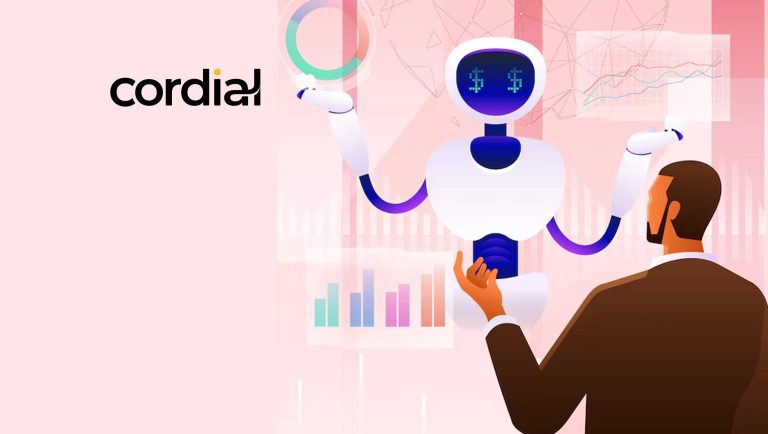Demand side platforms (DSPs) are the lynchpin of programmatic media buying, providing an automated and data-driven way for media traders to purchase digital ad space. As the interface between media buyers and sellers, DSPs act as the first port of call for the billions of bid requests that an advertiser receives and must make sense of every hour from ad exchanges, after which they determine (in milliseconds) whether or not the advertiser should action the request, based on a host of parameters.
Marketing Technology News: MarTech Interview With Massimo Arrigoni, CEO At BEE
In the days before the DSP media trading was carried out by human ad buyers. Insertion orders (I/Os) and creative assets were sent back and forth manually, and campaigns ran directly with publishers and ad networks.
The introduction of technology automated the process, executed it in real-time, and also gave buyers more control. This control means they can stop and start a campaign themselves for example, rather than calling their media agency; a reduction in budget or a brand safety issue can be handled by pausing advertising activity with the press of a button. In the same way, budgets can be reallocated if a campaign isn’t performing or if circumstances change unexpectedly. This was critical in the early stages of the pandemic, which rendered digital out-of-home (DOOH) less relevant; a DSP made it straightforward to quickly move budget from digital billboards in shopping malls to connected TV (CTV).
DSPs also enable more data-driven targeting – buyers can bid on specific users and use proprietary data assets rather than rely on the traditional audience breakdowns provided by the publisher. Activating data for targeting and measurement allows for better optimisation (although what the landscape will look like after the cookie disappears in 2023 is still much-debated).
It’s fair to say that without the DSP, media buying as we know it today would be very different.
But that’s not to say it’s a silver bullet. Far from it: like a lot of innovations, the DSP’s evolution has introduced its own set of issues.
Many of these stem from the consolidation that is a permanent feature of the fast-paced programmatic advertising sector and has resulted in the global DSP market now being dominated by only a handful of players. Of course, this offers marketers the benefits of scale and standardisation. But it also means commoditization – of features, functionalities, inventory supply, and data – resulting in a ‘one size fits all’ approach.
This leaves some media buyers unable to differentiate themselves and their trading strategies – at a time when, increasingly, programmatic trading requires buyers to demonstrate exclusive credentials (such as proprietary data, key intelligence, vertical market expertise and exclusive access to supply sources). These are their unique selling propositions (USPs) and today’s fiercely-competitive trading environment makes it more important than ever that DSPs are able to put them to good use.
Marketing Technology News: MarTech Interview With JR George, Administrative Vice President At Trustco Bank
So against that backdrop, what could the next DSP developments look like?
-
Key Performance Indicators (KPIs)
Major DSPs offer out-of-the-box campaign buying and optimisation strategies based on only the most common digital KPIs, like viewability, click-through rate (CTR) and cost per action (CPA). While this may work for many buyers, it’s largely insufficient for marketers who understand that real business value is tied to more complex user actions or engagements.
For example, clicking a banner ad is not nearly the same indicator of propensity to convert as the time a user spends on a website after clicking through to a landing page, or how long they watch a video ad. Buyers with the capability to set the KPIs that resonate with their specific business goals might opt for measuring how many people spend at least 30 seconds on a landing page or watch 15 seconds of a video ad because they know that users who behave in this way are far more likely to drive the desired outcomes than those who interact for much shorter periods of time.
Facilitating customisable KPIs could be a key role for the next-generation DSP.
-
Publishers
Supply is another area in which a DSP can open the floor and let users operate in a way that is set up to deliver on their particular objectives.
Currently a DSP accesses its supply through supply side platforms (SSPs) and this works well up to a point. But it limits the control that buyers have over their trading. DSPs let buyers target against allow lists and block lists for example, but because it’s not done directly with the publisher, visibility is compromised.
It also creates a longer supply chain (brand-agency-DSP-SSP-publisher), which adds more fees into the equation – in contrast to agencies historically paying publishers directly which enabled them to get good rates and terms. As a result, publishers now see less money and the buyer’s effective ROI is potentially reduced. And because agencies can’t track the investment going to a specific publication, it’s hard to negotiate preferential rates and terms with key media.
A buyer going direct to a publisher facilitates more flexible commercial arrangements between both parties. This might mean that the agency pays a tech fee to the DSP but has a direct payment agreement (on terms they set themselves) with the publisher. This puts the buyer back in the driving seat, and potentially creates new possibilities for securing preferential or exclusive access to a publication’s supply, data, new formats, etc.
DSPs have the potential to close the gap between buyers and publishers by enabling direct access; media buyers could integrate their own publishers so that the supply that is most relevant for them and their advertisers is easily available.
-
Data
Data is becoming increasingly valuable and business-critical. Media buyers that can bring their own first party data to the trading table can undertake more precise targeting, bidstream filtering and campaign optimisation, ultimately driving both greater efficiencies and performance. Because this data is proprietary, it is also another way to differentiate themselves from other buyers.
At the same time, data and how it is handled is being more heavily scrutinised as concerns around its privacy and security grow.
Balancing the privacy-performance requirements will increasingly fall to the DSP, whose role will be to find ways that buyers can keep data in their own environment (whether that’s cloud, server or a hybrid) but still leverage it for programmatic execution.
Meeting the needs of advanced buyers
Programmatic is a maturing market, accounting for the majority of digital ad spend. But this presents a paradox; widespread use is leading ad tech to become more and more homogeneous, while a growing breed of advanced buyer requires sophisticated technology that underpins differentiation strategies.
This is undoubtedly challenging, but it creates an opening for a new breed of DSP, one that combines core functionality with the capacity to support the business-driven goals of individual users. Specific KPIs, direct links to publishers and the safe handling and activation of proprietary data will be key parts of the equation as media buyers look to their DSPs to deliver unique advantage.
Marketing Technology News: MarTech Interview With Amit Daniel, Chief Marketing Officer And Strategy Officer At Cognyte






















